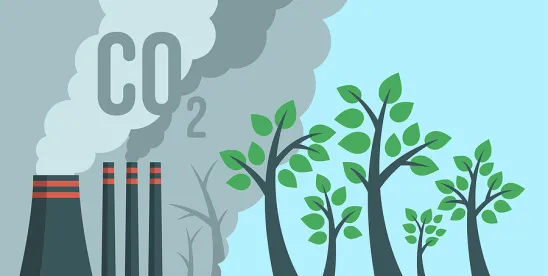On Thursday, April 25, 2024, the Government of Chile unveiled its Green Hydrogen Action Plan 2023-2030, a comprehensive strategy to promote the development of the green hydrogen industry and its derivatives in the southern country. This action plan builds on the initial efforts made by the current and prior administrations to position Chile as a major producer of low-cost green hydrogen (Green H2) in the international market. The Green Hydrogen Action Plan aims to industrialize the national economy by replacing polluting industries with sustainable ones and achieve the country’s goal of carbon neutrality by 2050.
The plan outlines 81 action items across 18 different categories, including governance, information/education, economic and financial incentives, environmental management, sustainability, regulation, permitting, additional infrastructure, energy cost and transmission, research and development and openness to the international markets. These measures will be implemented in two phases. During the initial phase (2023 to 2026), the plan will focus on establishing the necessary conditions for the growth of the Green H2 industry, including defining environmental, social, and labor standards, streamlining permitting processes, promoting research, advancing incentives, and relationships with potential buyers. In the second phase (2026 to 2030), building upon these foundations, the plan will focus on the development of the green hydrogen industry and decarbonization with an emphasis on regional and local development.
Some of the most notable action items included in the plan to advance private investment are:
- Creation of an Emission Trading System (ETS). The Government proposes the implementation of a cap-and-trade scheme in the energy sector to boost domestic demand for hydrogen in key sectors. The goal is to drive demand for hydrogen as a low-carbon alternative and a pilot program will be developed to facilitate the adoption of new hydrogen-based technologies to decarbonize emission-intensive sectors. As the emissions cap is gradually lowered, companies would face increasing incentives to adopt lower-carbon alternatives, such as green hydrogen. The pilot program will be designed between 2024-2025, and its implementation is expected to begin during 2025.
- Tax measures. In conjunction with other tax reforms, the Government aims to (i) establish a tax incentive for companies that develop production projects that promote new technologies and/or the decarbonization of the productive matrix, such as electromobility, renewable energy and green hydrogen, (ii) reduce the income tax rate to 25% and establish a 2% tax under the general taxation regime for companies, which may be deducted through investments that increase productivity, such as the acquisition of high-tech equipment, and (iii) improve the tax credits available under the “ley I+D”, a law that provides certain tax deductions to private investment in research and development. These tax reforms will be submitted to the Chilean Congress in 2024 and are expected to be approved in 2025.
- Streamlined Permitting Process. The Government is planning to introduce administrative and legislative reforms to simplify the process for granting permits and authorizations to develop projects. The new bill, known as Framework Law on Sectoral Authorizations, aims to reduce permit approval times by 30% and establish cross-cutting measures across all relevant bodies involved in the approval of critical permits. These reforms would create a unified permit information system with standardized forms for each sectoral body, excluding environmental permits under the environmental assessment impact system. The bill for these reforms was submitted to the Chilean Congress in early 2024 and is expected to be approved in 2026.
- US$1 Billion Financial Facility. CORFO (Corporación de Fomento de la Producción), Chile’s economic development agency, is establishing a financial facility that will be primarily used to channel private investment with government backing in the various stages of development of green hydrogen projects, with a focus on production, demand, and the acquisition of “parts and components” for green hydrogen facilities. This financing platform (funded by international development banks and CORFO), which is under development and currently defining project eligibility standards, is expected to become operational during the second half of 2024.
- Expansion of CORFO’s Green Credit Program. This program provides financing to financial intermediaries that lend money to investments in renewable energy, energy efficiency, electromobility, climate change, storage, and circular economy projects. By the end of the first semester of 2024, this program is expected to support the development of Green H2 projects.
- Award of State-owned Lands. The Government aims to accelerate the “Ventana al Futuro” initiative (a program launched in 2021 that allowed direct award of state-owned lands for the development of green hydrogen production facilities). Under the 2023-2030 action plan, the focus is to finalize the assignment of lands under the initial Ventana al Futuro process and to launch a second program to allocate additional state-owned lands for the development of green H2 projects in 2025.
- International Certification. In order to satisfy the regulatory and certification requirements that are being developed by the most prominent clean hydrogen demand centers in the world (such as the European market, South Korea and Japan), the Chilean Government is expected to develop two key measures, a sustainability certification system and to strengthen the National Renewable Energy Registry (RENOVA). Under the first initiative, the Government will develop a certification system aligned with international standards and the specific requirements from key import markets while also accommodating the unique characteristics of the Latin American and Caribbean regions. With respect to the second initiative, the focus will be on making RENOVA the base platform for the development of the hydrogen certification system.
Chile has launched a comprehensive and ambitious plan to position the country as a world leader in the production of green hydrogen. The Government recognizes the importance of strong public-private partnerships in mitigating risks and ensuring the success of early projects. Additionally, the plan aims to support the first wave of industrial green hydrogen projects, which will function as catalysts for market growth and help to reduce uncertainties.
The continuing development and implementation of the Green Hydrogen Action Plan hinges on Chile’s ability to attract investment, foster technological innovation and establish a favorable regulatory environment. Overall, this plan represents a bold and necessary step forward in Chile’s energy transition goals, which is not exempt from significant challenges, such as the timely approval of key legislation to provide tax incentives and streamline the regulatory process to develop infrastructure and green hydrogen projects.
As more information becomes available regarding the different initiatives under the Green Hydrogen Action Plan, new opportunities and/or challenges may be identified by the private sector as key factors in their appetite to invest in the development of Chile’s unquestionable potential in the nascent green hydrogen market.





 />i
/>i

